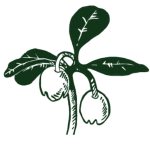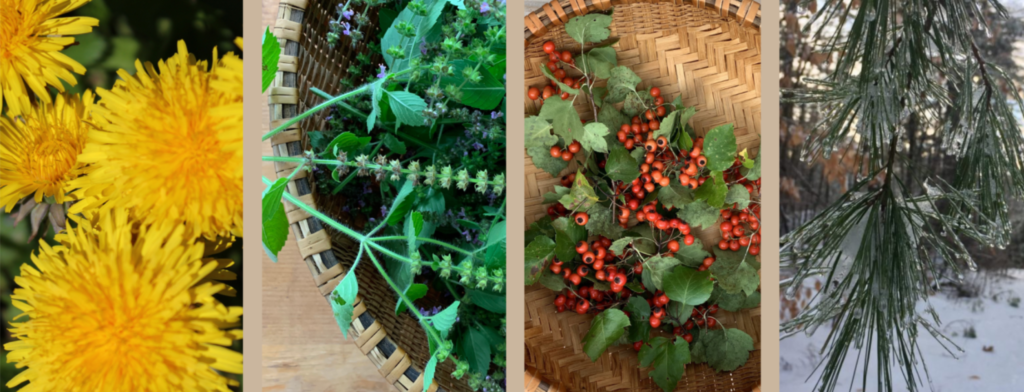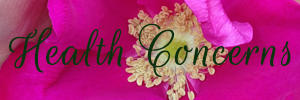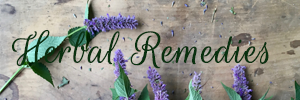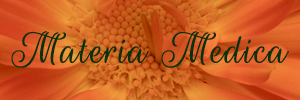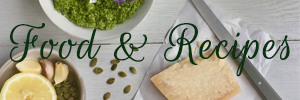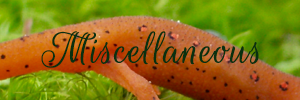This blog is a 2017 intro article I wrote for the (now defunct) magazine Herb Quarterly that I’m sharing with you now to introduce some helpful concepts and also promote the upcoming, in-depth and exciting Seasonal Energetics series I’ll be teaching (Western Energetics) along with guest teachers Tesia Love (Ayurveda and doshas) and Jiling Lin (Five Elements and Chinese/Asian Seasonal Rhythms) running April – November 2024. I’ll be tying it in with related seasonal topics including taste, seasonal materia medica single plant interactive deep dives, plant families, botany, and phytochemistry. This module excerpted and expanded from the Advanced series is sure to be amazing and is open to intermediate and advanced students. It is open now to anyone interested who has completed the Home Herbalist series or has a similar foundational pre-existing relationship with herbs.
What ARE “Energetics”?
First, I should clarify. “Energetics” is a term that gets tossed around with a variety of meanings. Sometimes it refers to the more vibrational, emotional, and plant spirit medicine actions of the plant, for example, how you might use it as a flower essence. That’s not what we’re talking about here. Here we refer to temperament and tissue states. Energetics can be applied to a particular person’s general constitution (are you typically hot or cold?), the active state of the health condition (is that cough wet or dry?), and how a plant can create change in the body (warming a cold person, drying a wet cough). Energetics help us categorize plants and understand people and disease so we can figure out the most effective herbs more easily.
Most ancient and complex systems of medicine incorporate energetics. In Ayurveda, this is obvious in the “dosha” or constitution of a person: pitta, kapha, or vata, with herbs and food chosen that balance the dominant dosha. In Traditional Chinese Medicine, you can break things down into yin and yang or into the five elements. In this article, we’ll focus primarily on the basics of tissue states from the concepts of traditional Western herbal medicine, which was, until the last couple hundred years, also traditional conventional medicine. Often we find correlations between the different systems of energetics, but not always. As herbalist Rebecca Altman points out, it’s kind of like slicing the same pie up in different ways.
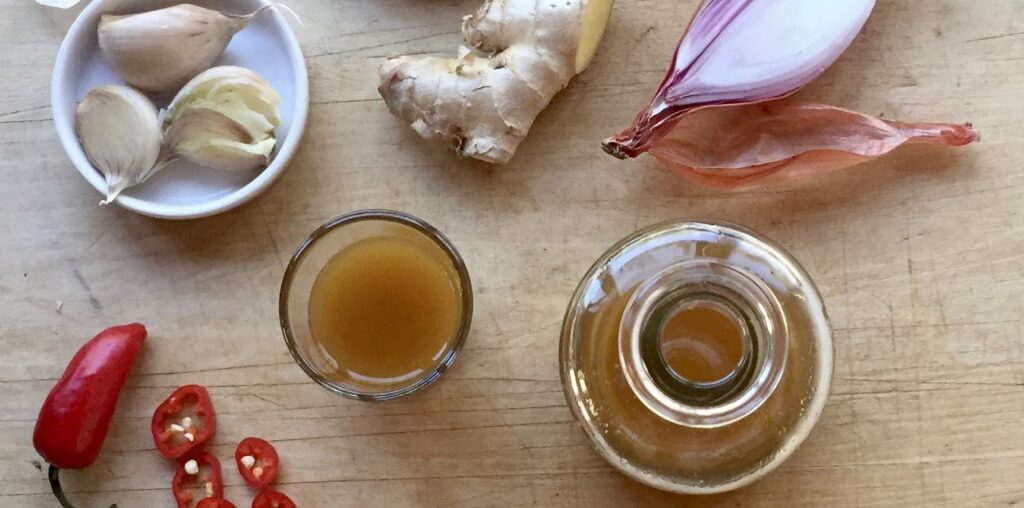
Heat ~ Excess ~ Agitation
In a hot, excess state, things are in overdrive. Like an engine burning too fast, there can be obvious signs of heat. You know that person who radiates heat. The skin might be hot to the touch, and you might be intolerant of or feel worse with heat. Your face and tongue might be red, sometime with a yellow coat. We see heat signs in acute inflammation, for example, after you sprain your ankle: it’s swollen, red, hot, and sharply painful. Acute infections also often have heat signs because the immune system is in overdrive trying to fend off pathogens.
Hot people might have more exaggerated symptoms when they’re sick, but they also might recuperate and heal more quickly compared to the cold, deficient person. Autoimmune flare ups also aggravate heat. In digestive excess, things move too rapidly through the digestive system, leading to diarrhea and nutrient deficiencies. In less extreme cases, a hot person might just have a strong digestive system and love to eat everything (especially fat and protein). In the cardiovascular system, we see hypertension, high cholesterol, inflammation, and an increased risk for heart attacks and other cardiovascular diseases.
Emotional heat signs include anger, irritability, and frustration (“red in the face”). Personality wise, someone with a hot constitution is loud, opinionated, and strong willed. The pitta dosha is very hot, as is yang energy in TCM.
Cooling the Heat: We use cooling herbs and foods to temper heat: vegetables, melons, berries, bitter-tasting herbs and foods like artichoke, dandelion, and burdock (which help open eliminatory channels to clear heat), sour-tasting herbs and foods like citrus and schizandra berry, anti-inflammatory herbs like turmeric, linden, and rose-family herbs like hawthorn, rosehips, and rose petals. In hot dry states, cool-moist herbs like violet leaf, marshmallow, and chickweed excel. Hot people often do best on a vegan or anti-inflammatory diet, but they’d often rather be eating burgers and fries. A Mediterranean diet can be a nice middle ground that works well or most people and tissue states.
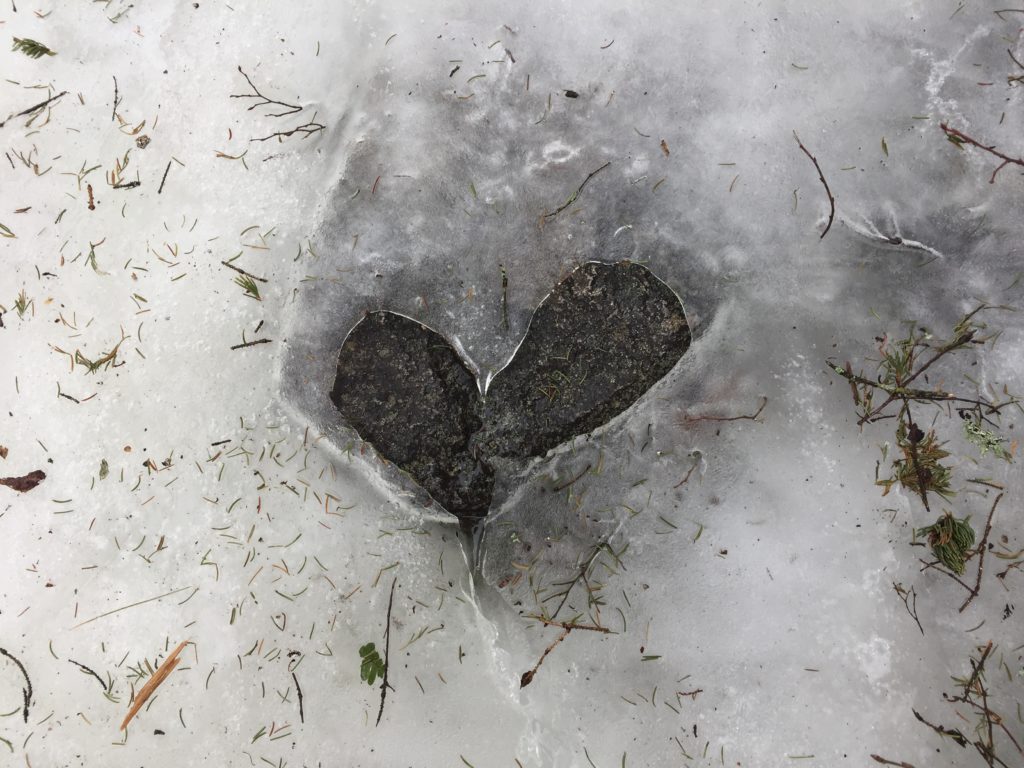
Cold ~ Deficiency ~ Depression
The opposite state of heat is cold. Cold people and conditions may literally be cold to the touch or intolerant of cold. Organ systems tend to under-function (hypo), spasm, and may not respond as they should. Stress can induce cold states as well. The digestive system may be sluggish with indigestion and constipation. In hypothyroid disease, the body’s thermostat and speed at which everything happens drops. In cold people, we see poor circulation, especially to the periphery – hands and feet. Pallor, lips, and tongue might be white or tinged blue/black/grey/purple from poor circulation and oxygenation. The body may not react appropriately. For example, in infection, the immune system isn’t strong enough to fight the pathogen and illness lingers in a subacute state for a long time, giving the opportunity for mucus to build up. The body is more prone not only to viral and bacterial infections but also fungal infections like candida and skin fungus, especially in cold-damp states.
Emotionally, a cold person could be flat and unresponsive or tense, anxious, depressed, or easily swayed by the masses. While children tend to be hot by nature, we see more cold signs in the elderly. The kapha dosha is cold and damp whereas vata can be cold and dry. In TCM, cold energy comes from yin.
Warming the Cold: Warming herbs and food help here: soup and other food served hot, warming spices like pepper, cayenne, ginger, and cinnamon, stimulating and aromatic herbs like those in the mint family and most evergreens. I’m a very cold person, and I love fresh ginger root, chai, or spicy bee balm tea on a cold winter day.
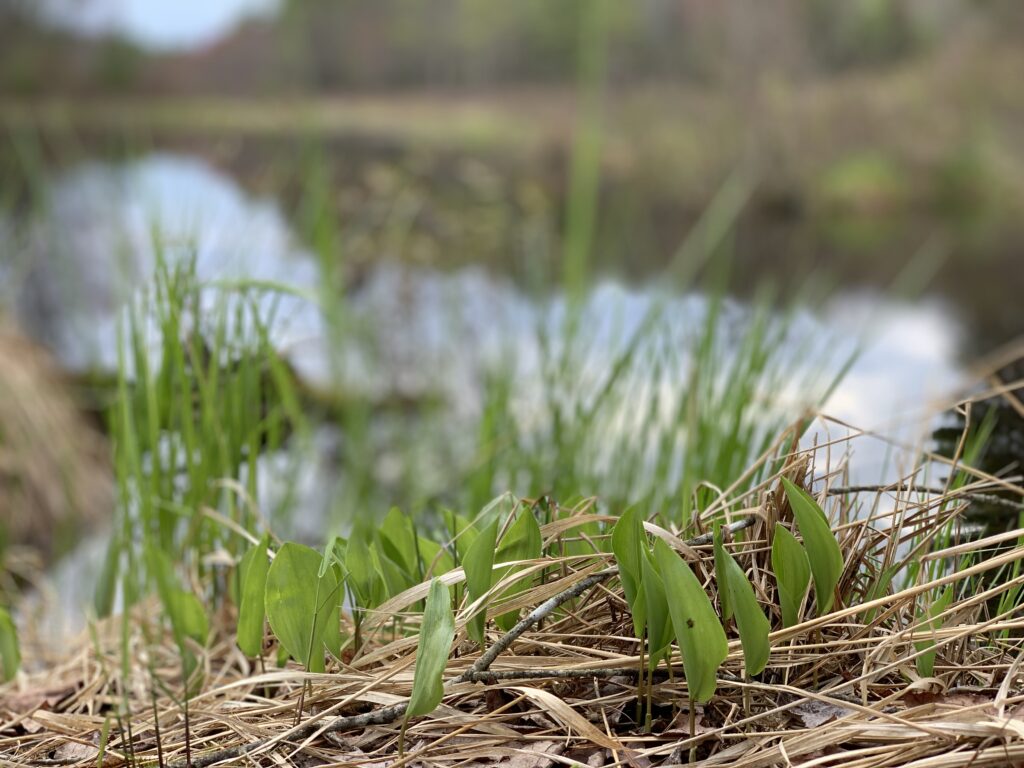
Damp ~ Moist ~ Stagnant ~ Lax ~ Boggy
When we’re damp, we could either be holding on to too many fluids where they get the chance to get stagnant or boggy, or we could be excreting too many fluids, where we get lax and leaky. An obvious example is nasal and respiratory congestion. In stagnant congestion, it might be hard to blow your nose or cough up mucous even though you can tell it’s there impeding healthy function. In a leaky state, you’re coughing up mucous like crazy, and it’s dripping out your nose. But in both cases there’s too much moisture and dampness. Fluids that sit without draining can harden. Chronic dampness, especially of mucous, puts you at greater risk of viral, bacterial, and yeast or fungal infections. People who are overly oily and greasy can also be considered damp.
Dampness often refers to mucous but can also refer to vaginal secretions, urination, edema, and sweating. If the liver is not detoxifying appropriately, you may also see a buildup of metabolic waste that creates feelings of dullness and ill-health. (This is really obvious when you’re hung over from too much alcohol or food the night before.) The complexion may be dull and the tongue covered in a coating (yellow in hot-damp, white in cold-damp). The kapha dosha is damp and cold. Constitutionally damp people tend to hate humidity, which is more pronounced with the temperature. (A hot damp person might hate humid summer days while a cold damp person might be fine in summer yet dreads cold damp weather.) Damp people also tend to have poor vascular tone: hemorrhoids, varicose veins, edema, etc.
Drying Dampness: We dry dampness in a couple different ways, depending on the type of dampness involved. Bitter-tasting herbs and foods – burdock, dandelion, barberry, Oregon grape root, yellow dock, nettle – help open up the eliminatory channels to drain dampness, especially if it’s in the form of liver stagnation or edema. Diuretics like parsley, dandelion, burdock, and celery can be helpful when fluids need to be drained via the kidneys. Laxatives like yellow dock and triphala help when the colon is congested, constipated, and stagnant. Meanwhile, astringents like cinnamon, rose petals, raspberry leaf, plantain leaf, and lady’s mantle help tone up tissues so that they’re not so leaky (chronic diarrhea, vaginal secretions). Sage profoundly dries secretions like sweating. Anti-histamine herbs like goldenrod and berberine-rich Oregon-grape root and goldenseal dry up mucous secretions while horehound, horseradish, ginger, and other expectorants improve the flow of stagnant mucous. If there is an infection at the source of or fostered by dampness, then antimicrobial and immune supportive herbs should be employed to address that directly. Diet wise, we generally avoid dairy, sugar, alcohol, and processed foods, which encourage dampness in the body. Berries and deep blue-black-purple pigmented foods help improve vascular tone.
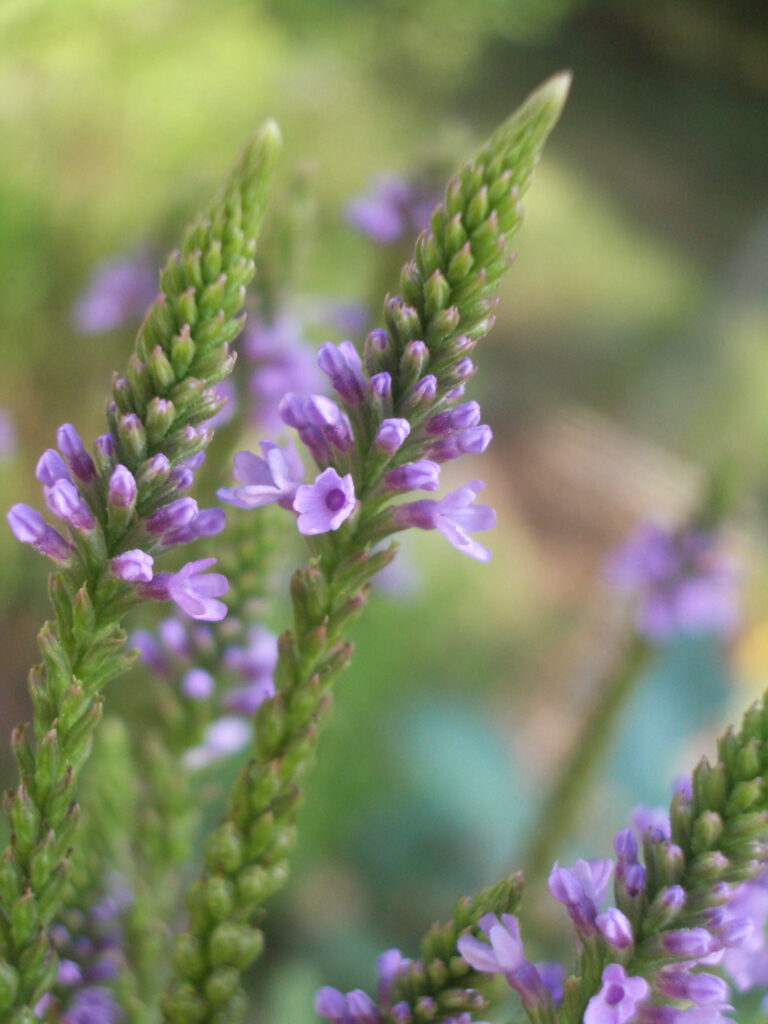
Dry ~ Atrophy ~ Wind ~ Tension
Dryness also has two facets: lack of moisture or atrophy and wasting. In both cases, the tongue may be dry and thin, but in atrophy it may also be withered and cracked. Healthy mucous lining is scarce. Nutrient absorption is poor, leading to malnutrition, brittle hair, itchy dry skin, chipped nails. There may also be constipation and hard stools, bloating, and gas. Dry coughs don’t produce mucus and are irritated and often spastic or hacking. A somewhat related tissue state is tension, which is also referred to as “wind” in TCM. These people vacillate easily in their symptom patterns and mood and have both emotional and physical tension They might have a quivering tongue and slippery pulse as well as spasms, pain, anxiety, nervousness, and insomnia. The vata constitution is dry and “windy.” People who live in a state of adrenaline stress tend to also be dry and tense, thin, wiry, perhaps a bit speedy yet cold.
Moistening the Dry: In dryness, we look to moisten with oils, water, and mucilaginous herbs. Oils primarily come from the diet: whole milk, coconut oil, flax oil, fatty fish, nuts, seeds, meat, cooked mushrooms. Water comes from hydration, either plain or – better yet – in food states like broth (especially bone broth), miso, and soup. A little salt and mineral-rich herb-foods like seaweed help us hold on to the water better. Mucilaginous herbs and foods help provide a temporary coating on dry tissues and encourage repair. Look to herbs like marshmallow root and leaf, slippery elm, plantain leaf, violet leaf, licorice, fenugreek, ground flax and chia seeds.
Sweet tonic herbs help and foods nourish and ground dry and tense people: codonopsis, maca, shatavari, ashwagandha, rehmannia, perhaps even a little honey. Aromatics like cardamom, holy basil, and nutmeg help ease spasms and tension while reinvigorating healthy function. Certain nervous system herbs help ground a tense, “windy” person: valerian, catnip, blue vervain, and low-dose pulsatilla/anemone or lobelia.
Applying Energetics
The real magic of energetics is how you apply it to make your herbal medicine choices work better for you. The goal here is not to reverse the energetic state but to balance it. The same is true in formulation. We usually don’t want to make an entirely “cold” blend for someone in a “hot” state, but we’ll focus on cooler herbs. Energetics are not hard and fast rules – you’ll go nuts if you try to categorize everything or expect plants to always fit in neat boxes. For example, turmeric is somewhat warming by nature but also can help cool because it’s so good at improving detoxification, clearing excess heat, and reducing inflammation.
Here are a few ways you can use concepts of energetics in real life:
- To help you choose between multiple herbs for a specific person or condition. For example, use horehound for a wet, productive cough to improve and aid expectoration but wild cherry bark for a dry, irritated, spastic cough. Ginger can be great in cold, tense, chronic pain but less-than-ideal for someone who’s already hot or in an acute state of hot pain. For nutritive teas, you might choose violet leaves (moistening) over nettle (diuretic, astringent, and drying) for someone who already pees a lot and tends to be dry by nature.
- To direct a formula’s energy. I often use my energetic herbs in supportive or synergist roles. For example, I make a pretty similar gut-healing tea blend, but if the person or condition is showing a lot of cold signs, I’ll add ginger and cardamom. In someone who’s already hot or showing signs of an irritated gut, I might skip them and stick with licorice, marshmallow, and rose petals. In someone with a lot of diarrhea and leakiness, I’ll use an ample amount of cinnamon in the tea (which is a little mucilaginous yet potently toning to the tissues, drying up excess secretions).
- To balance a formula. Maybe the herb I want to use based on action is either unnecessarily strong in its energetics or it’s not really a good fit for the individual person’s energetics. I might add an herb with some opposing energy to balance that out while still getting the healing actions I want out of that primary herb. We see this often in digestive bitters. Bitters like artichoke leaf and dandelion – which extremely helpful for digestion and many other things – tend to be energetically cold. Adding some warming digestive herbs to the mix like those aromatic spices – cardamom, cinnamon, ginger – balances the energetics while still improving digestive function.
Resources to Learn More about Western Energetics
Kat Maier’s Energetic Herbalism is my FAVORITE book to explore this topic of herbal energetics and is a recommended textbook to accompany your class materials in the Seasonal Energetics 2024 series.
jim mcdonald: Jim has many great articles of his own and others’ at www.herbcraft.org, and you can also order his writings on energetics or online classes.
Matthew Wood: Matt has written extensively on energetics from a western perspective, particularly in his book The Practice of Traditional Western Herbalism.
Michael Moore: Michael had a different take on energetics, creating his own system of energetics, constitution, and fluid transport based loosely on anatomy and physiology concepts. You can access “Herbal Energetics in Clinical Practice” and other manuals for free at http://www.swsbm.com/ManualsMM/MansMM.html.
Herb Books that Incorporate Energetics: If you’re trying to figure out which herbs are hot, cold, dry, etc., consider these herbals: Herbal Medicine by Sharol Tilgner, The Herbal Apothecary by J.J. Pursell, and Modern Herbal Medicine by Steven Horne and Thomas Easley., Rosalee de la Foret’s website and book Alchemy of Herbs, KhadiYah Preciado’s expansive Herbal Holistic Healing, Karen Rose’s delightful Spirit & Practice of Spiritual Herbalism, among others.
Clinical herbalist Maria Noël Groves sees clients and teaches classes at Wintergreen Botanicals Herbal Clinic & Education Center in Allenstown, New Hampshire.
The statements made on this blog have not been evaluated by the FDA and are not intended to diagnose, prescribe, recommend, treat, cure, or offer medical advice. Please see your health care practitioner for help regarding choices and to avoid herb-drug interactions.
The article originally appeared in Herb Quarterly magazine in 2017. This information will be significantly updated and expanded in the 2024 Seasonal Energetics series course/materials.
